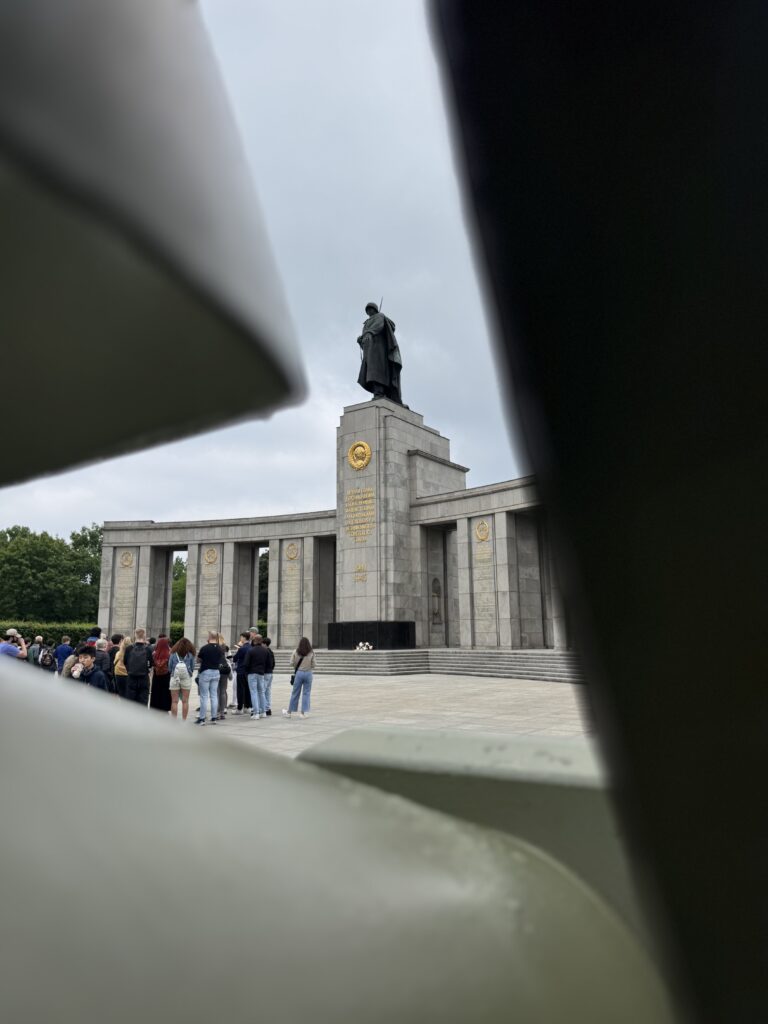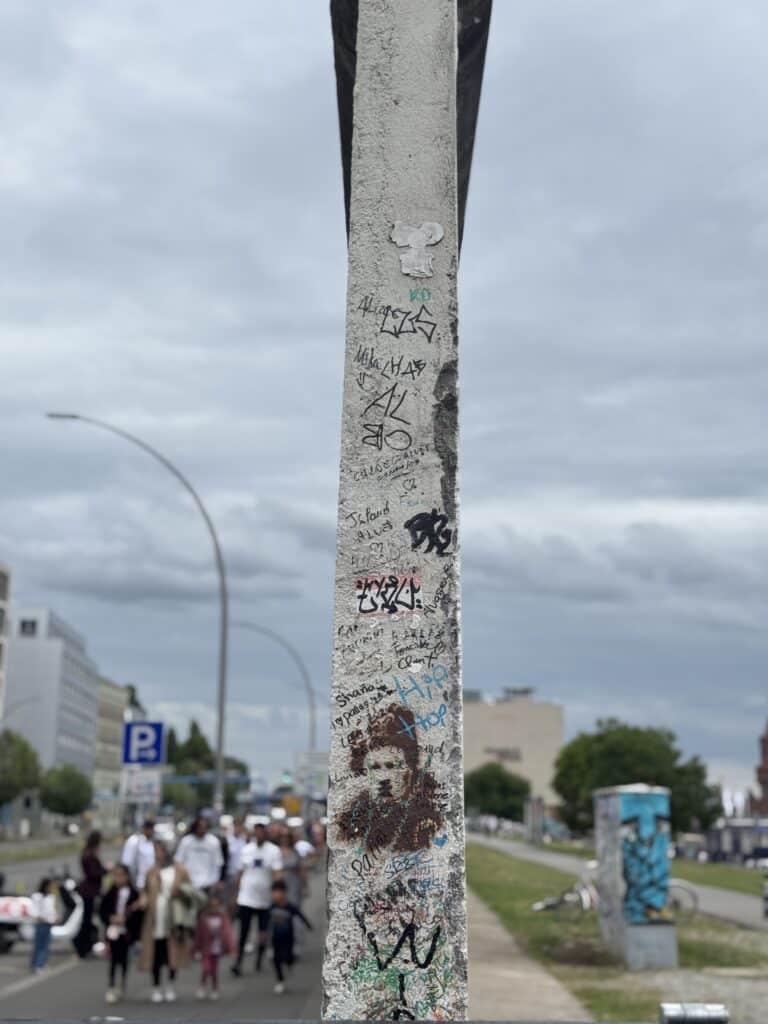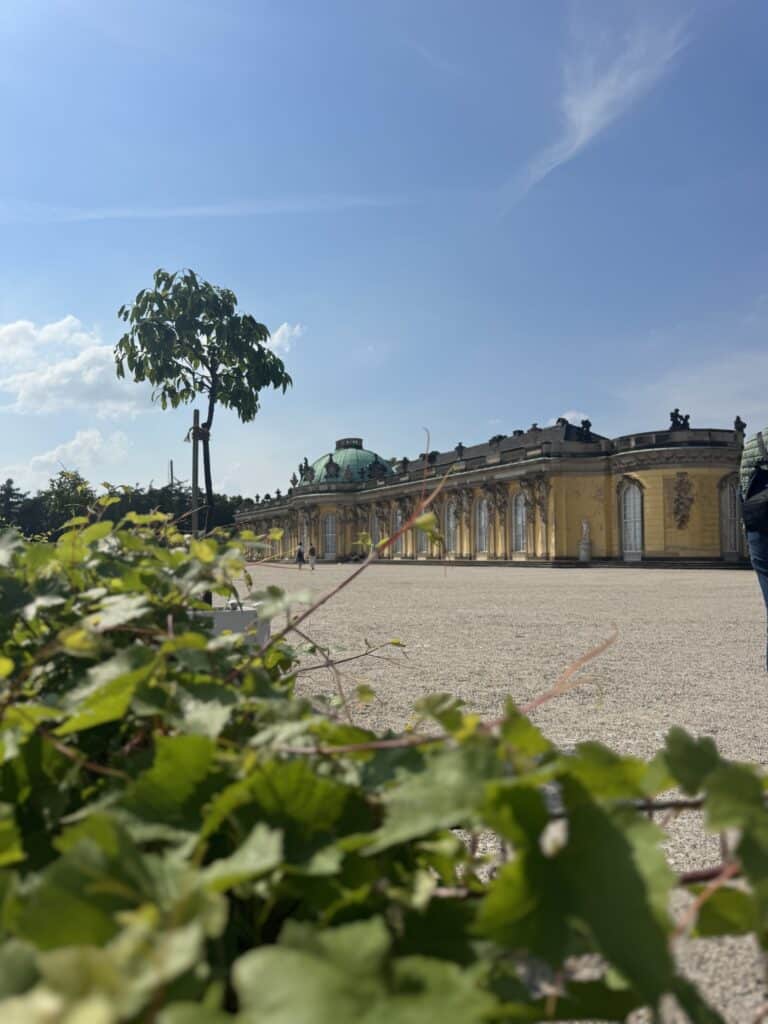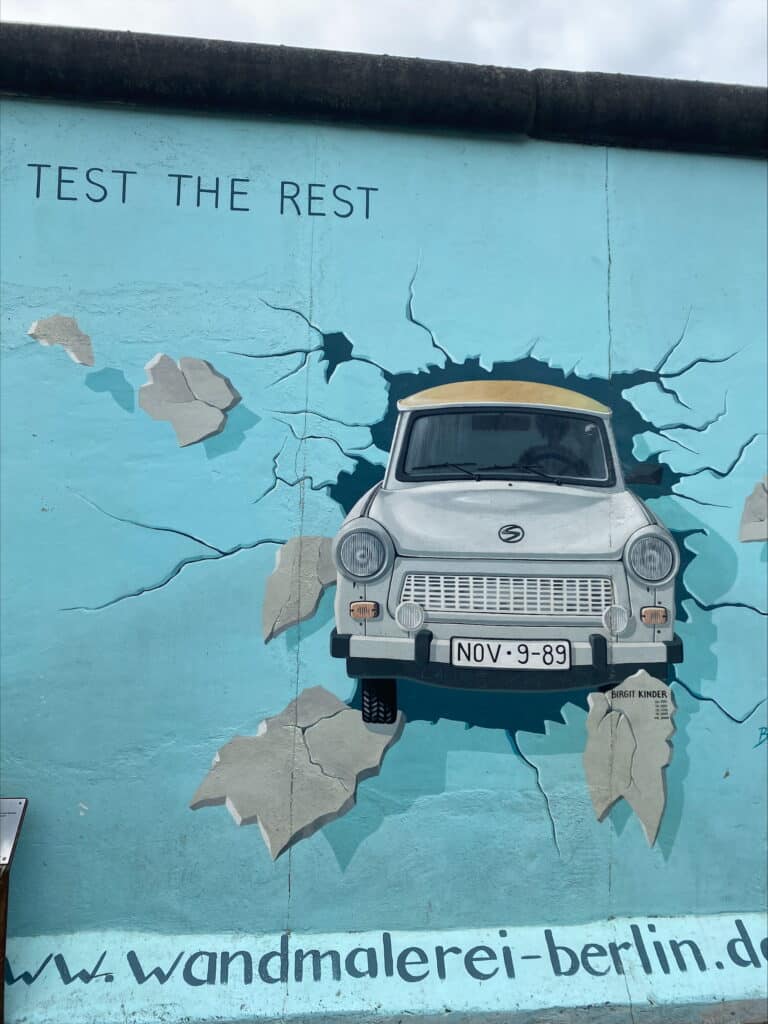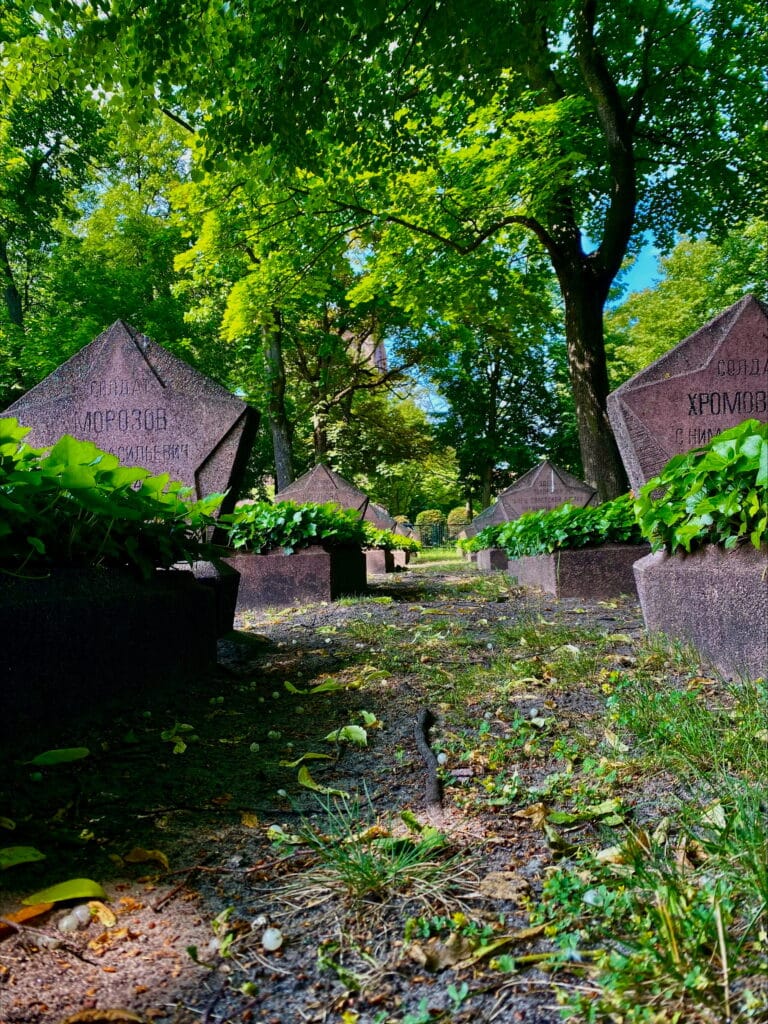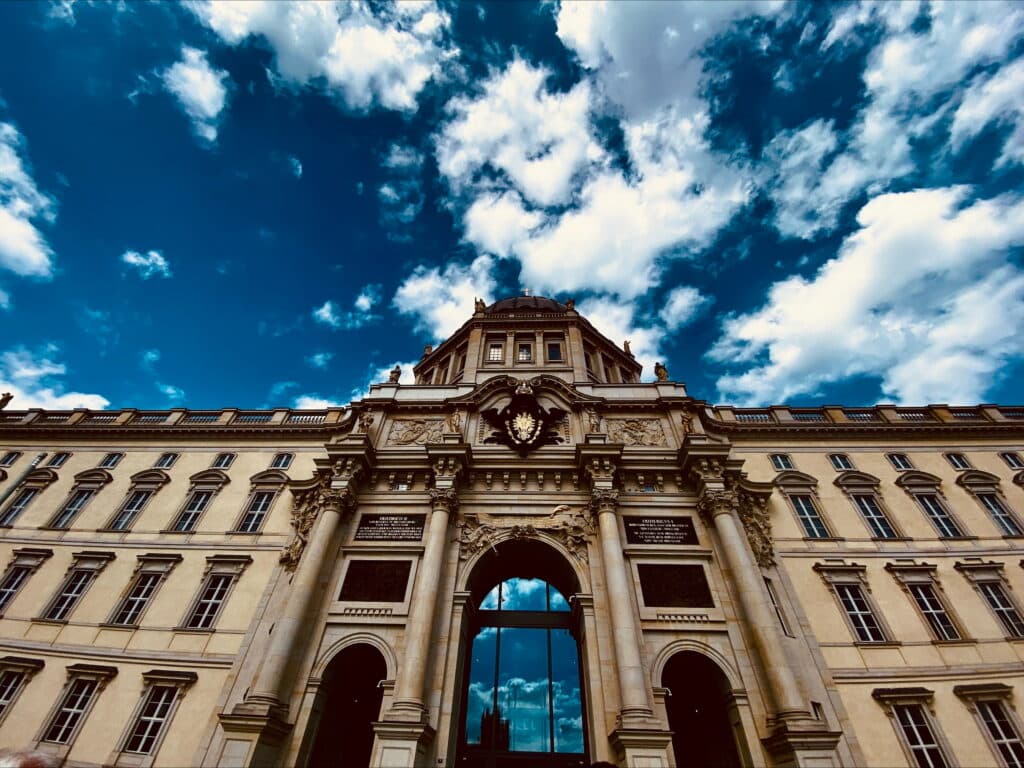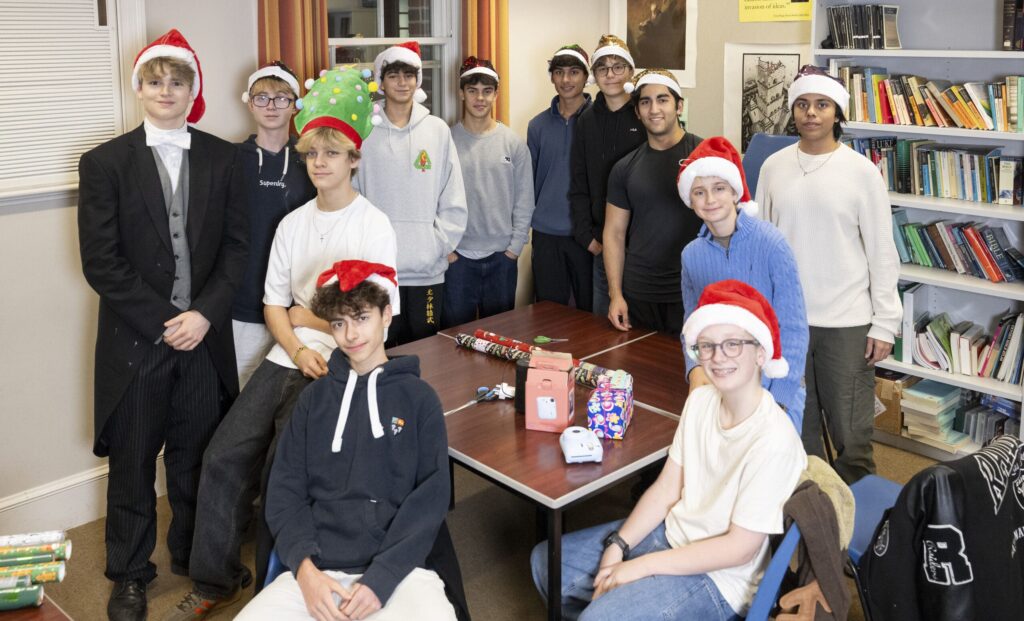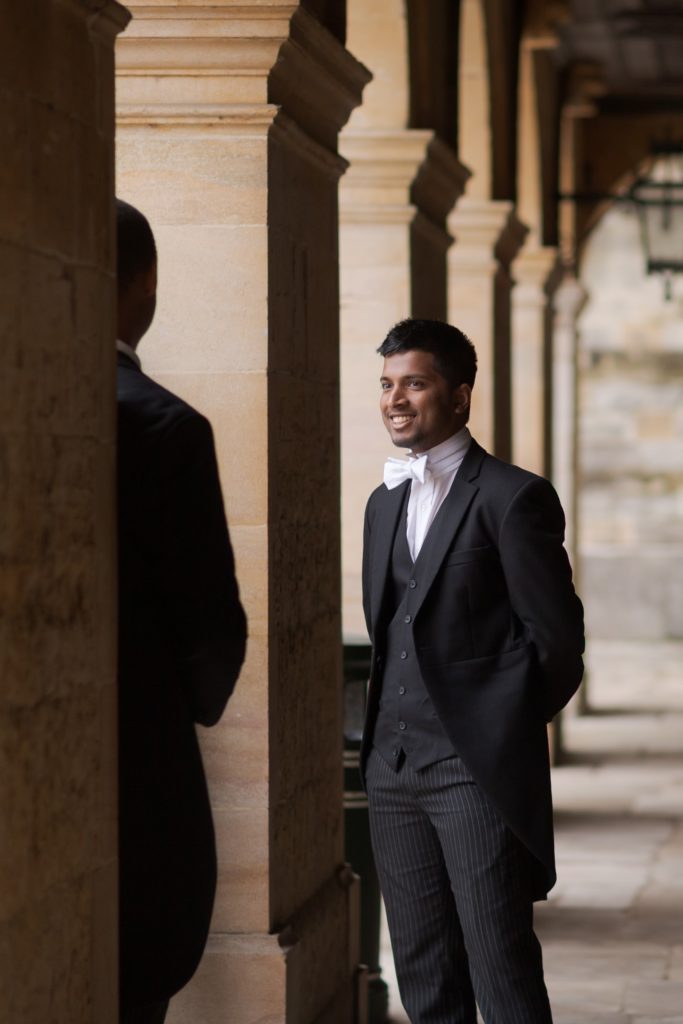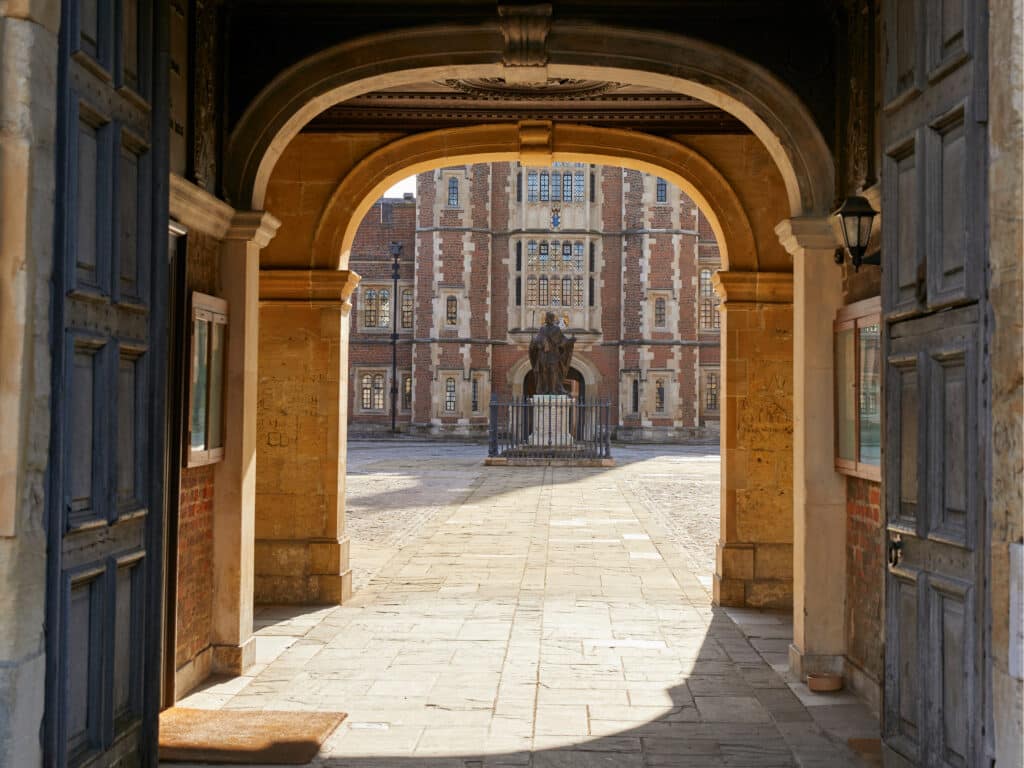On Thursday 29 May, 34 historians studying GCSE History embarked on a trip to Berlin to explore the historic city and the role it has played in shaping the world we know today. At Heathrow, we were met by our teachers and our guide David from Anglia Tours, who had served in Berlin during the Cold War. After a short flight and a midnight arrival at our hotel, we quickly went to bed in preparation for our first busy day in Berlin.
In the morning, we travelled on the German S-Bahn to the Brandenburg Gate and paid our respects at the nearby memorial to the murdered Sinti and Roma. Forty per cent of their population was wiped out by the Nazis during the Holocaust. We then visited the Reichstag and saw our first Soviet memorial – a grand and imposing monument. It reminded us of the eight million Russian soldiers killed on the Eastern Front, though the memorial was regarded differently after the Cold War. One of the most impactful visits was to the Memorial to the Murdered Jews of Europe. The Holocaust claimed the lives of six million innocent Jewish men, women, and children – two-thirds of Europe’s Jewish population.
As part of our walking tour, we also visited the site of Hitler’s bunker, now a car park with only a wooden sign to remind us of his crimes. Our first of many museums was the Topography of Terror, which detailed the numerous dangers of living under Nazi rule in the 1940s, built on the site of the old Gestapo and SS headquarters. This location was also the site of the Berlin Wall and is one of the only places in the city where a stretch of it remains intact. After lunch, we visited the German Historical Museum to view the exhibition Roads Not Taken. It recounted 14 different turning points in German history – for example, the peaceful revolution of 1989, or in 1936 when the French army numbered 600,000 and the German army only 350,000 – and considered various alternative outcomes of these moments. This was extremely humbling, as any of these events could have changed not only the lives and history of the German people but also the history of the world. It was one of the most interesting exhibitions we visited during our trip. That afternoon, we also viewed the Humboldt Forum (where the old Royal Palace has been partially rebuilt) and the Neue Wache – the memorial for the victims of war and dictatorship. Inside, we spent time contemplating Käthe Kollwitz’s Mother with her Dead Son.
We woke early on day two for our day out in Potsdam. Our bus stopped at several notable locations, including the Glienicke Bridge – marking the border between East and West Berlin. We walked across this site of many spy exchanges between the Soviets and Americans during the Cold War, most famously dramatised in the movie Bridge of Spies, when Soviet spy Rudolf Abel was exchanged for U-2 pilot Gary Powers.
We then travelled to the Garrison Church in Potsdam, where Frederick the Great was originally buried. In the 1990s, he was reburied where he had always wanted to be, at the Palace of Sanssouci, his favourite residence. The church was heavily bombed during the war and has recently been rebuilt and reopened. From the top of its tower, we enjoyed a fantastic view of the area as well as the location of the ‘Nazi’s Day of Potsdam’ in 1933.
We also visited the stunning Wannsee Villa. This breathtaking location was where 15 high-ranking Nazi Party and German government officials gathered to discuss and coordinate the implementation of what they called the “Final Solution of the Jewish Question.” Shockingly, the meeting lasted only 90 minutes to formalise and coordinate the mass murder of millions. It was only 50 years after the Wannsee Conference that it was opened as a memorial and museum. It was extremely educational and its key exhibit is the single remaining copy of the minutes of the infamous meeting, ordered to be destroyed but preserved by accident – proof of the Nazi’s crimes.
After lunch, we visited the magnificent and imposing Palace of Sanssouci, the home of the Prussian King Frederick the Great. With its striking and beautiful yellow façade, Sanssouci was unlike any other palace I have ever visited. The palace itself was divided into ten main rooms, including the breathtaking Marble Hall and the library. All of the rooms were lavishly decorated with numerous paintings and statues, and it was a pure joy to immerse ourselves in 18th-century life. We were also given time to wander through the gardens and admire the artificial ruins – the height of fashion for royalty. Frederick the Great had them built to resemble Roman ruins of a temple, aqueduct, and theatre. Dinner that evening was traditional German schnitzel and apple strudel, followed by a chance to watch the Champions League final!
After a hearty breakfast, we packed our bags and left the hotel for an action-packed final day. Our first stop was, personally, my favourite part of the trip: the Stasi prison at Hohenschönhausen. Originally built in 1935 for use by the Gestapo, it was later used by the Soviets as a detention centre for Nazis. In 1951, control was passed to the East German Stasi, who were notorious for the lengths they went to to capture, interrogate, and imprison their political opponents. Suspects had no rights, no contact with lawyers or family, and were considered guilty until proven innocent – which was extremely rare. Their aim was not to physically break prisoners but to subject them to psychological torture such as sleep deprivation and isolation.
The most powerful part of this tour was being guided by former prisoners who had been tortured in the very corridors they now show to visitors from around the world. In 1989, the prison was closed after the fall of the Berlin Wall and was reopened in 1990 as a memorial to the crimes committed within its walls.
A less sombre and more colourful part of our trip was the East Side Gallery – a 1.3 km-long section of the Berlin Wall painted by various artists in 1990 after the peaceful revolution and the reunification of Germany. It features hundreds of paintings by artists from around the world and is the largest open-air gallery in the world. This was a very striking visit, as the paintings were beautiful and most held deeper meanings – reminders of the importance of unity and the power of people when they come together. Afterwards, we visited the Documentation Centre, which focused on the history of the wall and the enormous impact it had on Berlin’s population. It separated families and tore relationships apart.
Our final stop was Checkpoint Charlie, where in October 1961 Russian and American troops had a tense standoff with tanks lining the street, only metres apart. It was perhaps the closest the world came to nuclear war – the whole world was watching. It was then time for us to board the coach and return to the airport and travel back to Eton.
I would like to thank Mr Robinson for planning the trip, as well as the Dr Martin, Ms Cordingley and Ms Young for accompanying us, as well as our guide David. I have always wanted to visit Germany, and this tour was not only enjoyable but also enlightening – especially as we saw so many of the sites we have studied as part of our History GCSE. It was truly an unforgettable three days.
